Study on the Movement and Deposition of Particles in Supercritical Water Natural Circulation Based on Grey Correlation Theory
Abstract
:1. Introduction
2. Research Object
2.1. Experimental Equipment
2.2. Parameter Information
2.3. The Physical Properties of Supercritical Water
2.4. Grid Division
3. Calculation Method
3.1. Numerical Simulation Method
3.2. Grey Correlation Degree method
3.3. Calculation Process
4. Analysis of Calculation Results
4.1. Temperature Distribution of Supercritical Water
4.2. Velocity Distribution of Supercritical Water
4.3. Particle Concentration Distribution in Supercritical Water
4.4. Correlation Analysis of Heat Flux and Temperature
4.5. Correlation Analysis of Heat Flux and Particle Deposition
4.6. Correlation Analysis Between Initial Particle Concentration and Particle Deposition
4.7. Correlation Analysis between Particle Diameter and Particle Deposition
4.8. Grey Correlation Analysis of Parameters and Particle Deposition
4.9. Model Verification
5. Conclusions
Author Contributions
Funding
Acknowledgments
Conflicts of Interest
References
- Karakama, K.; Rogak, S.N.; Alfantazi, A. Characterization of the deposition and transport of magnetite particles in supercritical water. Supercrit. Fluids 2012, 71, 11–18. [Google Scholar] [CrossRef]
- Ma, D.; Zhou, T.; Li, B.; Feng, X.; Zhang, H. Study on the movement and deposition of particles in supercritical water. Int. J. Heat Mass Transf. 2019, 136, 55–69. [Google Scholar] [CrossRef]
- Zhao, X.; Jin, H. Investigation of hydrogen diffusion in supercritical water: A molecular dynamics simulation study. Int. J. Heat Mass Transf. 2019, 133, 718–728. [Google Scholar] [CrossRef]
- Liu, J.; Li, H.; Zhang, Q.; Kong, X.; Lei, X. Numerical study on the density wave oscillation of supercritical water in parallel multichannel system. Nucl. Eng. Des. 2019, 342, 10–19. [Google Scholar] [CrossRef]
- Liu, X.; Zhou, T.; Li, Z.; Wang, H. Study on Methods of Calculating Heat Transfer Coefficient of Supercritical Water with Grey Theory. In Proceedings of the 18th International Conference on Nuclear Engineering, Xi’an, China, 17–21 May 2010. [Google Scholar]
- Liu, J.; Jin, Y.; Zhao, P.; Ge, Z.; Li, Y.; Wan, Y. Analysis of heat transfer of supercritical water by direct numerical simulation of heated upward pipe flows. Int. J. Therm. Sci. 2019, 138, 206–218. [Google Scholar] [CrossRef]
- Kong, X.; Li, H.; Zhang, Q.; Guo, K.; Luo, Q.; Lei, X. A new criterion for the onset of heat transfer deterioration to supercritical water in vertically-upward smooth tubes. Appl. Therm. Eng. 2019, 151, 66–76. [Google Scholar] [CrossRef]
- Wang, W.; Yang, D.; Liu, W.; Nie, X.; Wang, S.; Bi, Q. Experimental investigation on two-phase flow instabilities of ultra supercritical pressure boiler with spirally water wall tubes. Exp. Therm. Fluid Sci. 2017, 81, 304–313. [Google Scholar] [CrossRef]
- Wang, W.; Yang, D.; Liang, Z.; Qu, M.; Ouyang, S. Experimental investigation on flow instabilities of ultra-supercritical water in parallel channels. Appl. Therm. Eng. 2019, 147, 819–828. [Google Scholar] [CrossRef]
- Cheng, X.; Zhao, M.; Feuerstein, F.; Liu, X.J. Prediction of heat transfer to supercritical water at different boundary conditions. Int. J. Heat Mass Transf. 2019, 131, 527–536. [Google Scholar] [CrossRef]
- Kiss, A.; Balaskó, M.; Horváth, L.; Kis, Z.; Aszódi, A. Experimental investigation of the thermal hydraulics of supercritical water under natural circulation in a closed loop. Ann. Nucl. Energy 2017, 100, 178–203. [Google Scholar] [CrossRef]
- Liao, Y.; Lucas, D. 3D CFD simulation of flashing flows in a converging-diverging nozzle. Nucl. Eng. Des. 2015, 292, 149–163. [Google Scholar] [CrossRef]
- Liao, Y.; Lucas, D. Possibilities and Limitations of CFD Simulation for Flashing Flow Scenarios in Nuclear Applications. Energies 2017, 10, 139. [Google Scholar] [CrossRef]
- Han, Z.; Xu, Z.; Yu, X.; Sun, A.; Li, Y. Numerical simulation of ash particles deposition in rectangular heat exchange channel. Int. J. Heat Mass Transf. 2019, 136, 767–776. [Google Scholar] [CrossRef]
- Li, Y.; Gu, W.; Wang, D.; He, J. Direct numerical simulation of polydisperse aerosol particles deposition in low Reynolds number turbulent flow. Ann. Nucl. Energy 2018, 121, 223–231. [Google Scholar] [CrossRef]
- Lu, H.; Lu, L.; Jiang, Y. Numerical simulation of particle deposition in duct air flows with uniform, expanding or contracting cross-section. Energy Build. 2016, 128, 867–875. [Google Scholar] [CrossRef]
- Li, P.; Zhang, X.; Lu, X. Dissociation Behaviors of CO2 Hydrate-Bearing Sediment Particle during Settling in Water. Energies 2018, 11, 2896. [Google Scholar] [CrossRef]
- Zhang, F.; Liu, Z.; Liu, Z.; Liu, Y. Experimental Study of Particle Deposition on Surface at Different Mainstream Velocity and Temperature. Energies 2019, 12, 747. [Google Scholar] [CrossRef]
- Inthavong, K. A unifying correlation for laminar particle deposition in 90-degree pipe bends. Powder Technol. 2019, 345, 99–110. [Google Scholar] [CrossRef]
- Chang, Y.-C.; Chiu, T.-Y.; Hung, C.-Y.; Chou, Y.-J. Three-dimensional Eulerian-Lagrangian simulation of particle settling in inclined water columns. Powder Technol. 2019, 348, 80–92. [Google Scholar] [CrossRef]
- Tao, C.; Zhao, G.; Yu, S.; Peng, W.; Wang, J. Experimental study of thermophoretic deposition of HTGR graphite particles in a straight pipe. Prog. Nucl. Energy 2018, 107, 136–147. [Google Scholar] [CrossRef]
- Frederix, E.M.A.; Kuczaj, A.K.; Nordlund, M.; Bělka, M.; Lizal, F.; Jedelský, J.; Geurts, B.J. Simulation of size-dependent aerosol deposition in a realistic model of the upper human airways. J. Aerosol Sci. 2017, 115, 29–45. [Google Scholar] [CrossRef]
- Jia, L.; Zhang, L.; Yu, S. Deposition of non-spherical microparticles in the human upper respiratory tract. Particuology 2018, 36, 185–189. [Google Scholar] [CrossRef]
- Lintermann, A.; Schröder, W. Simulation of aerosol particle deposition in the upper human tracheobronchial tract. Eur. J. Mech. B/Fluids 2017, 63, 73–89. [Google Scholar] [CrossRef]
- Song, M. Study on Transcritical Natural Circulation Flow Instabilities; North China Electric Power University: Beijing, China, 2016. [Google Scholar]
- ANSYS, Inc. ANSYS CFX Solver Theory Guide; ANSYS, Inc.: Canonsburg, PA, USA, 2015. [Google Scholar]

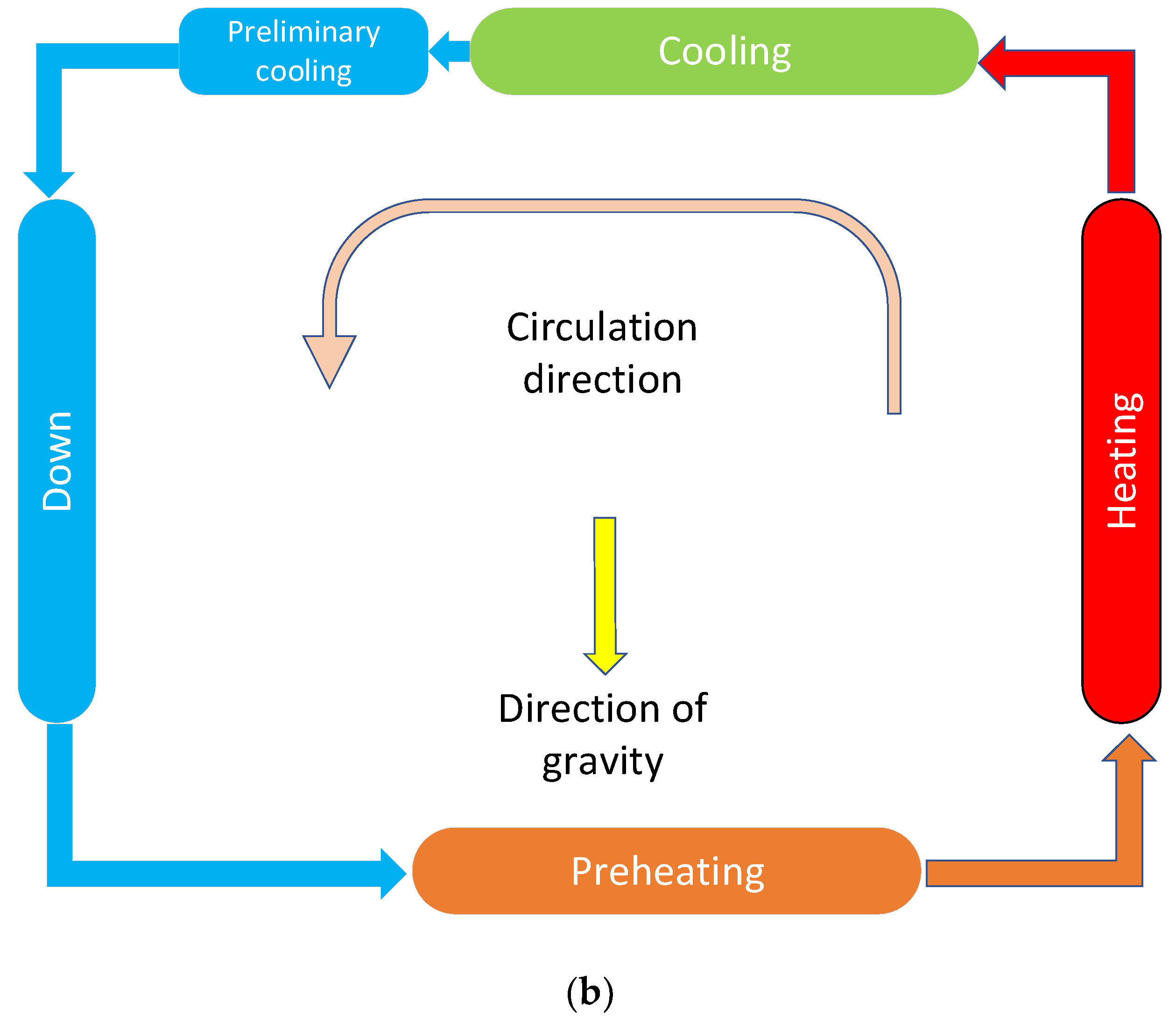
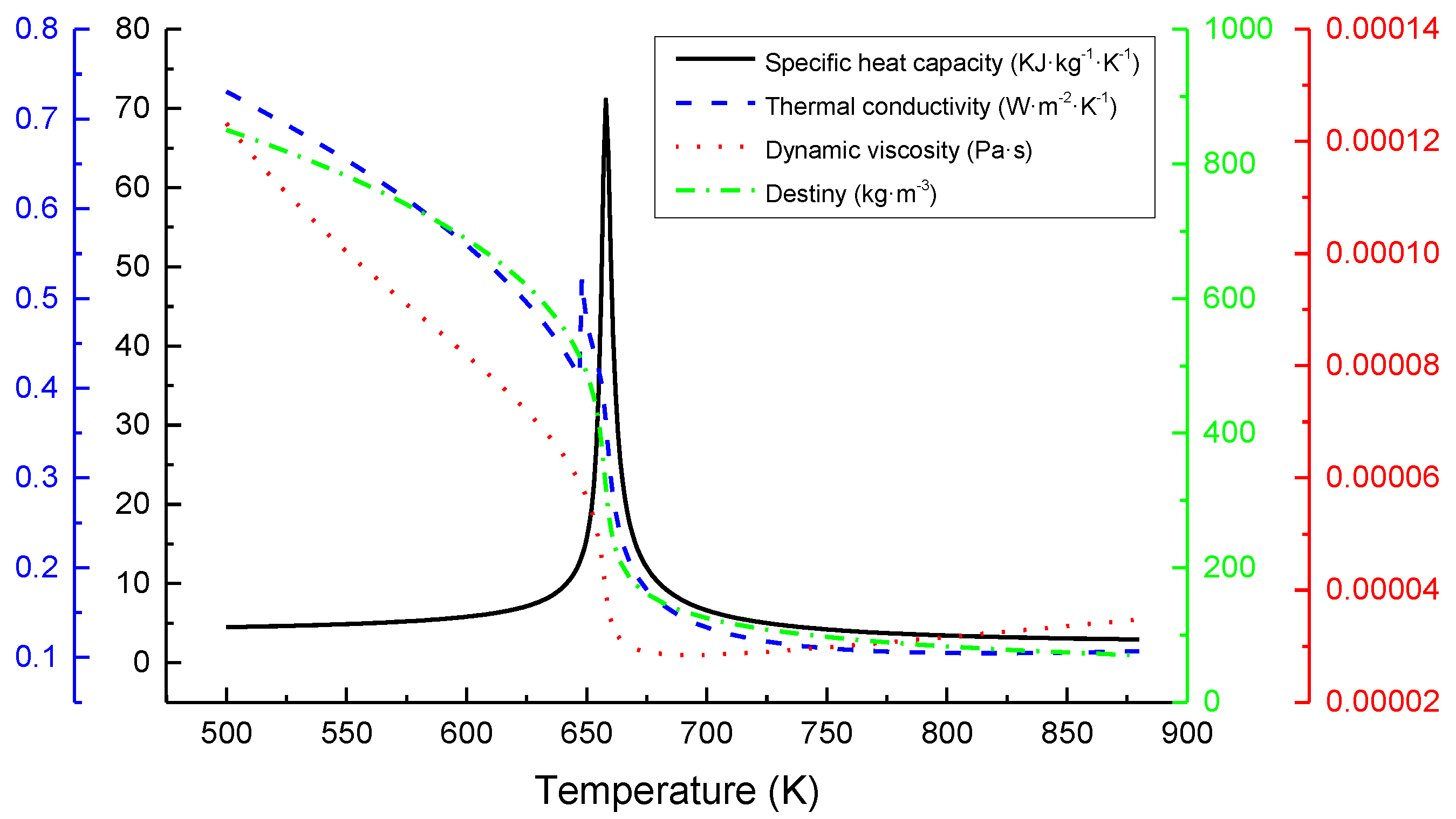
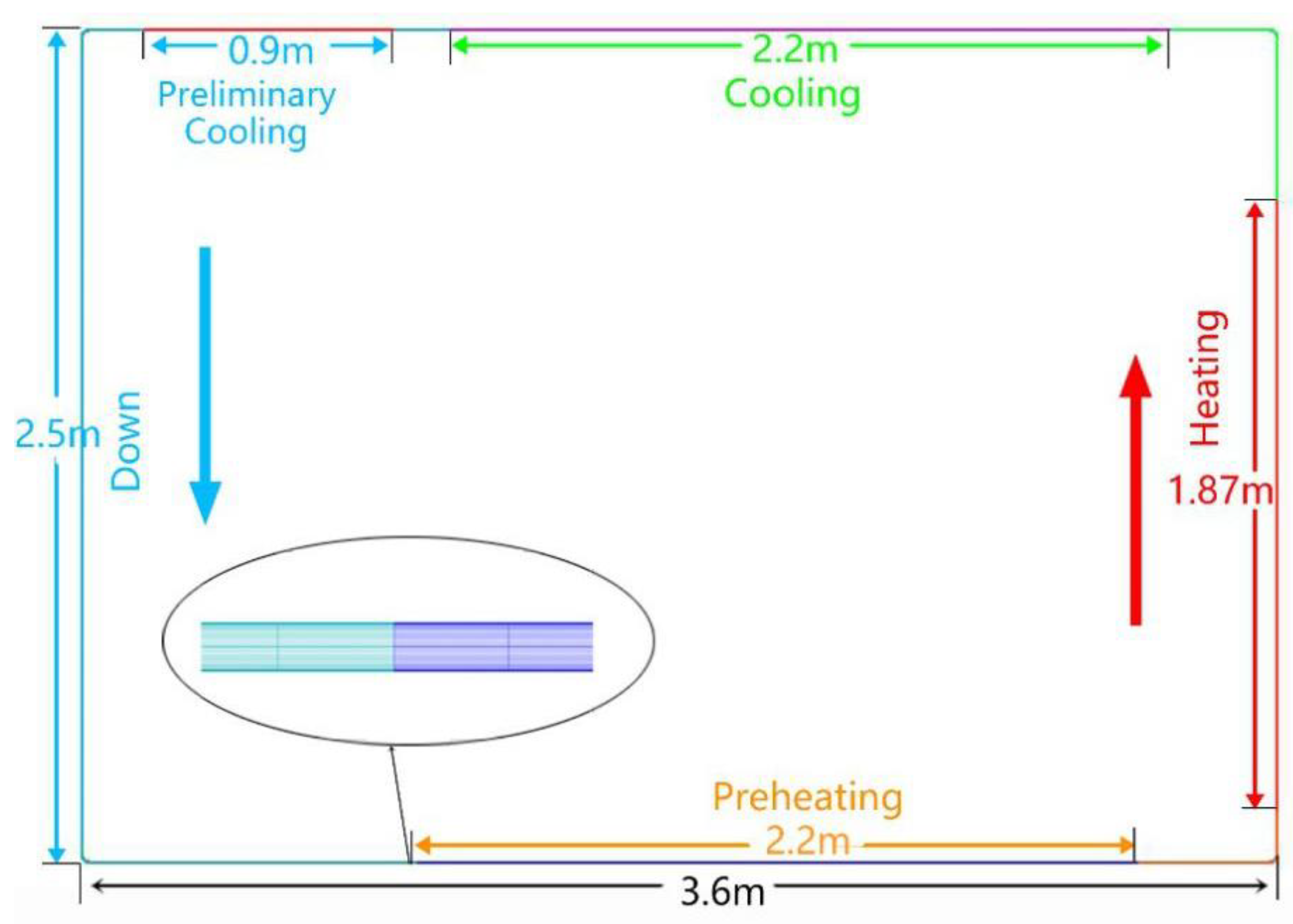
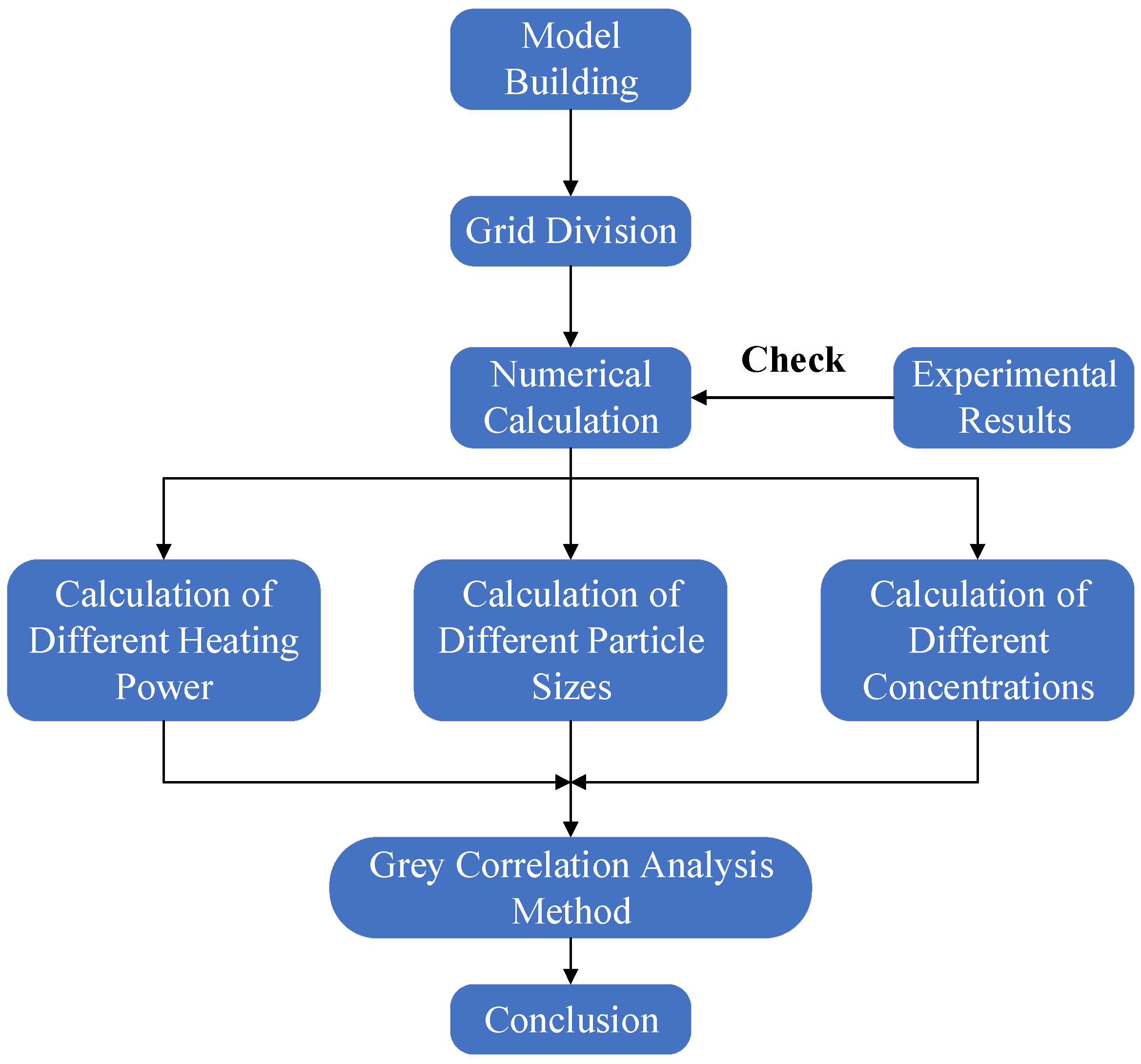
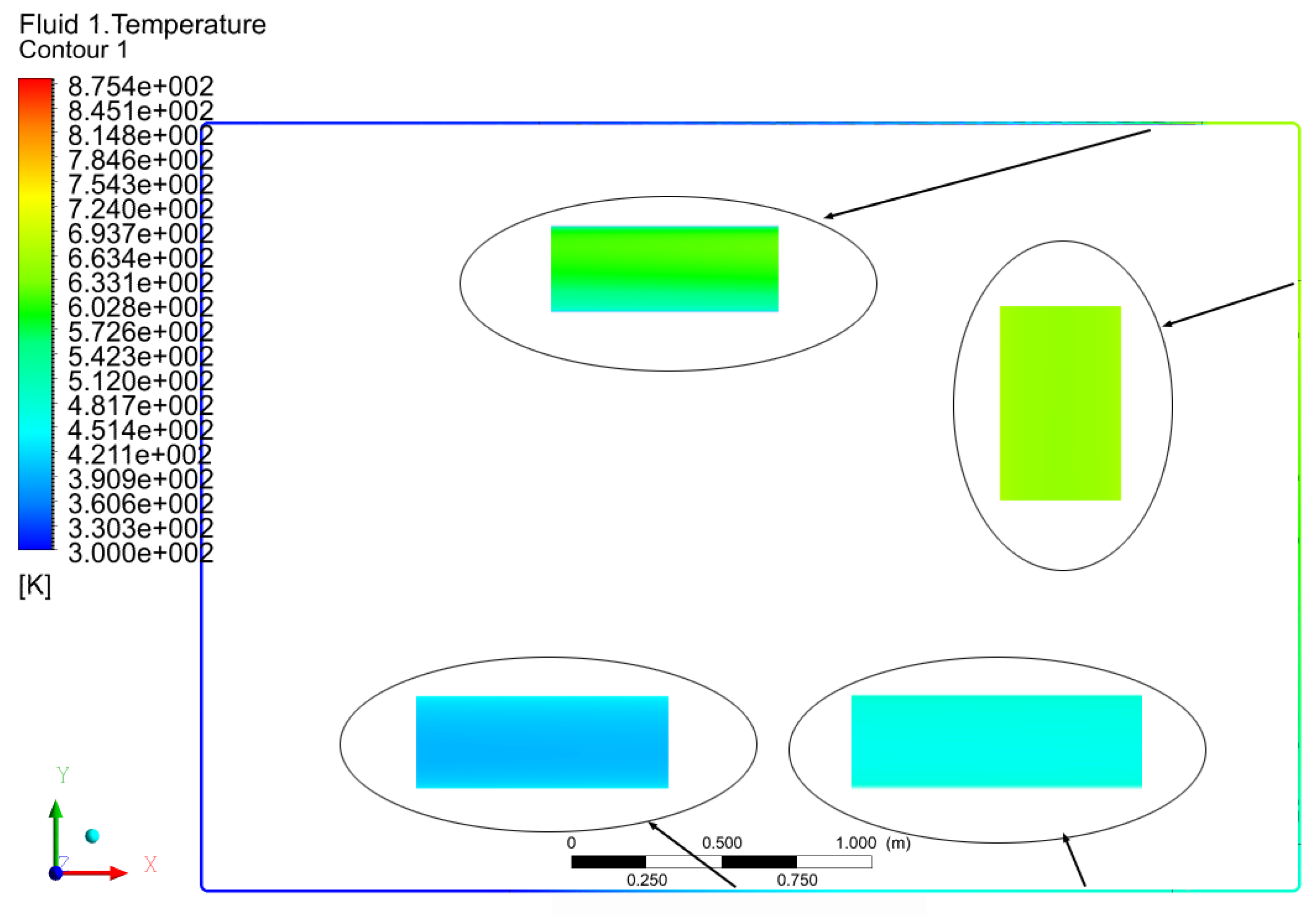

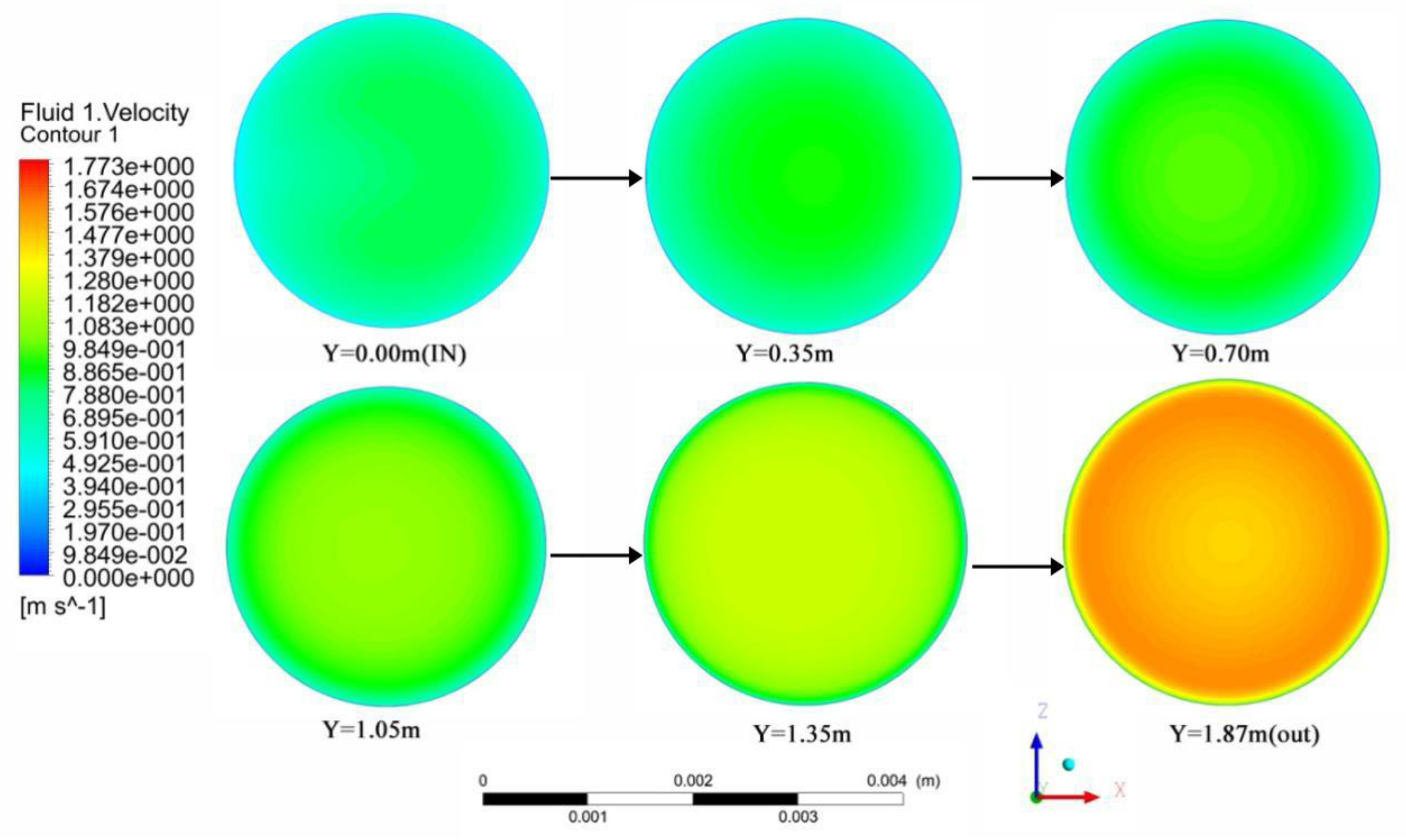
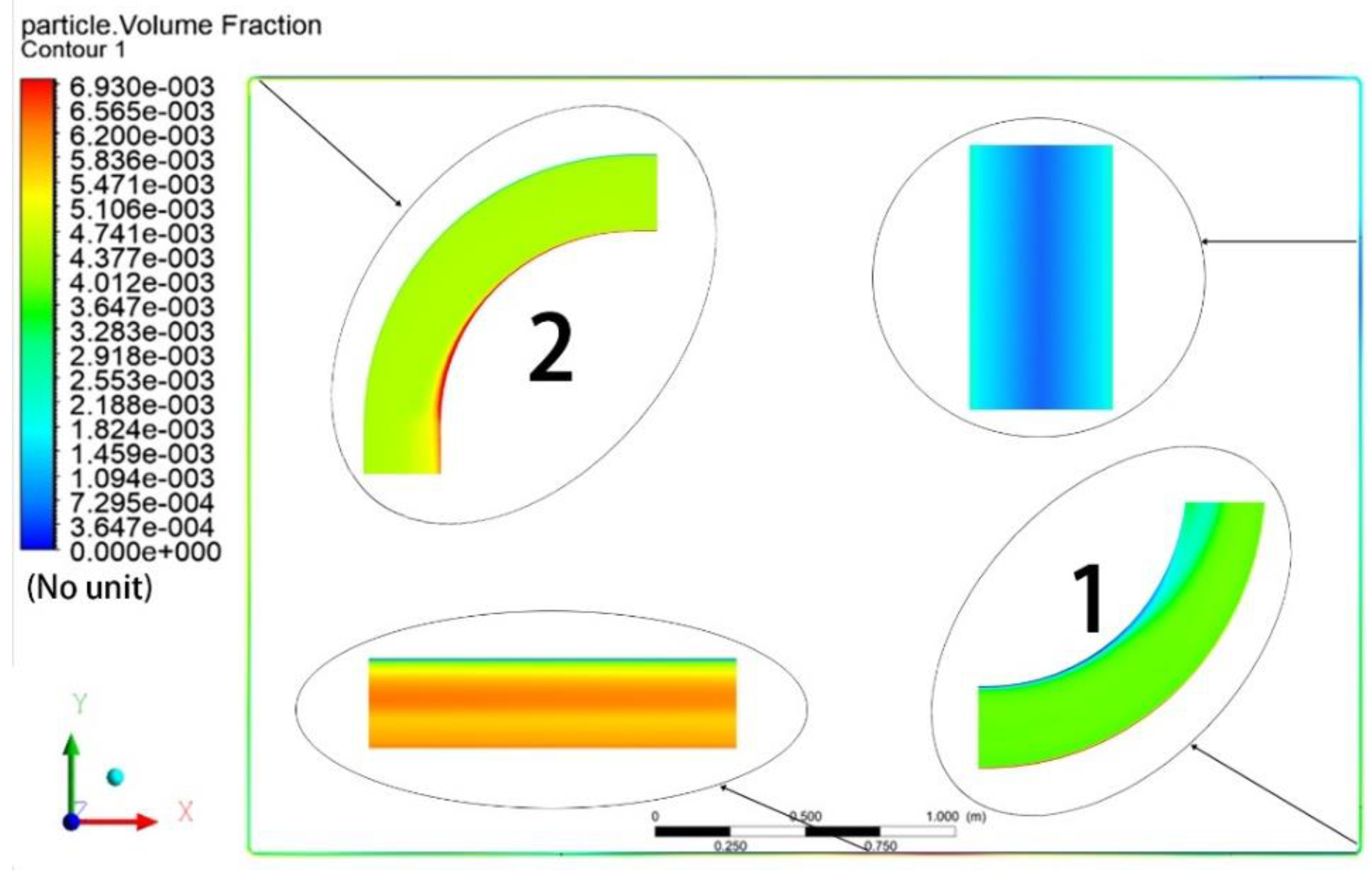
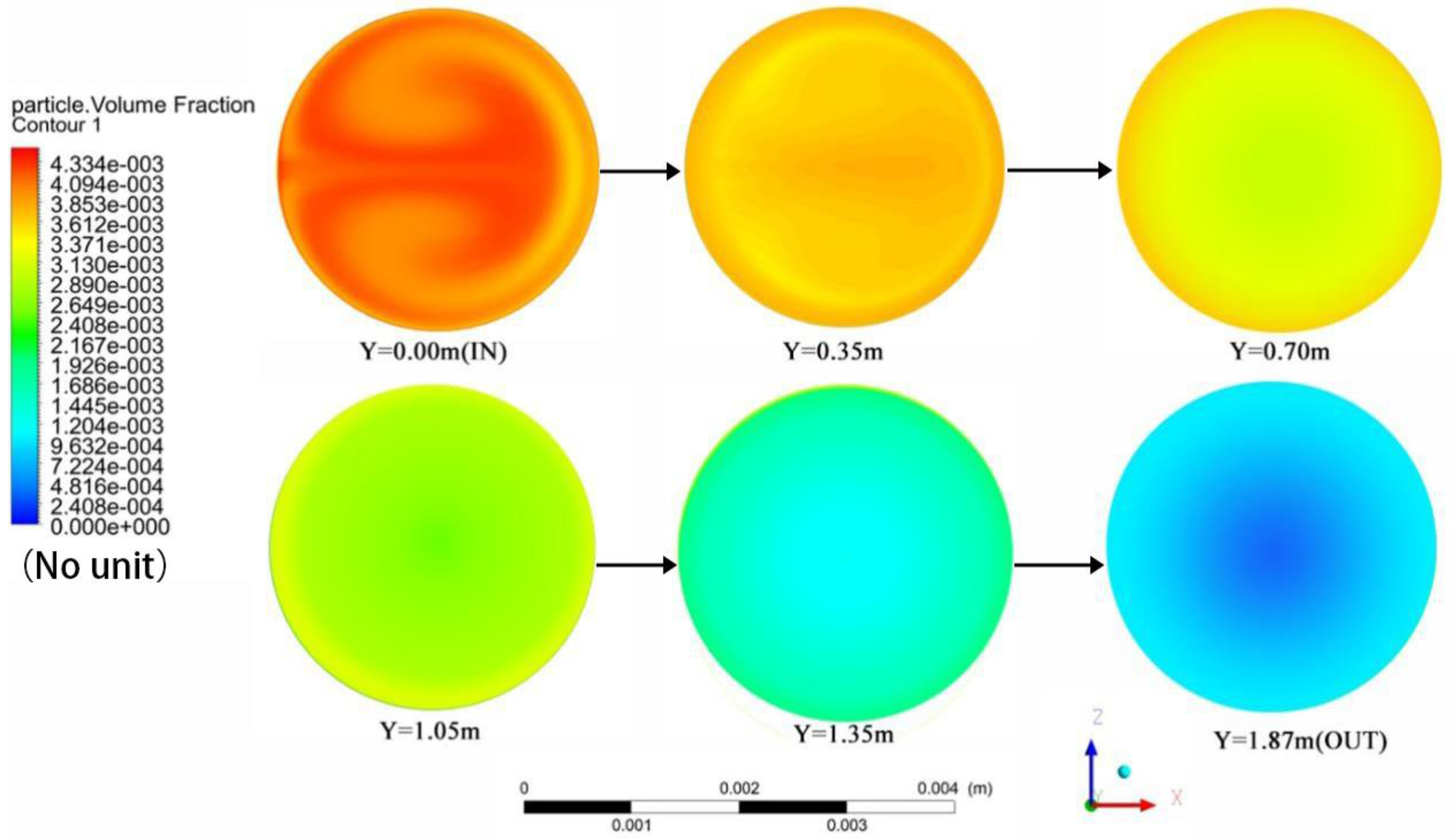
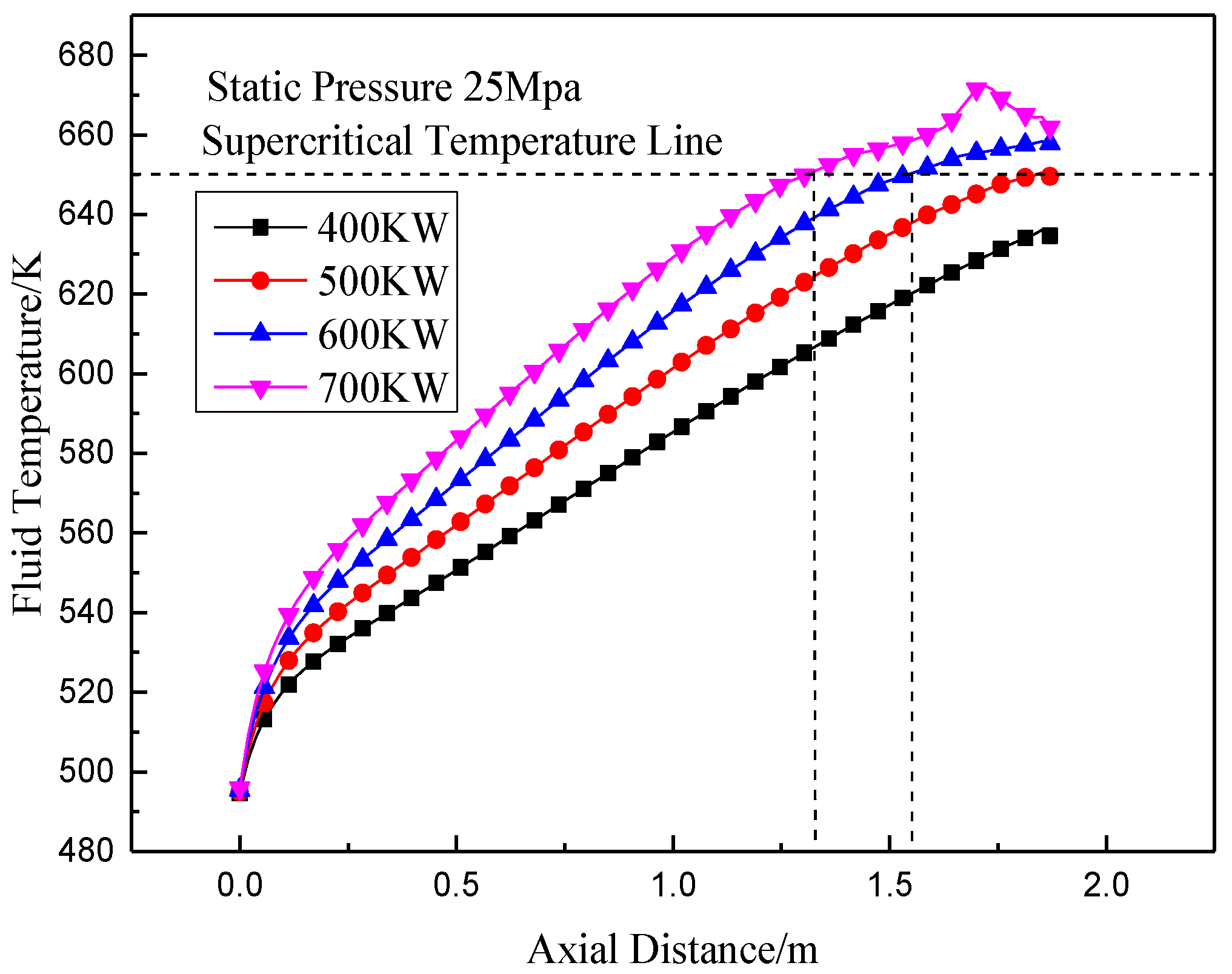

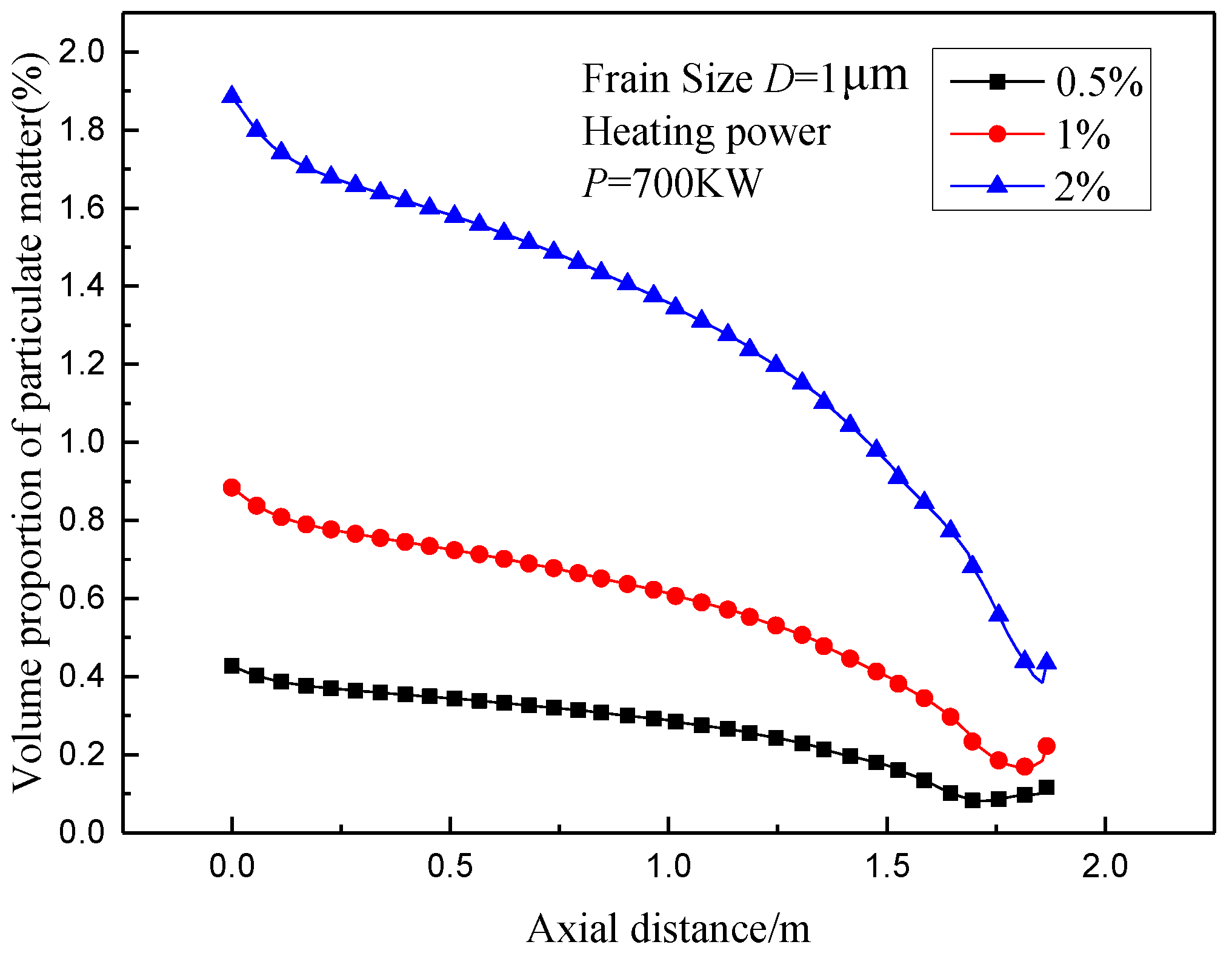
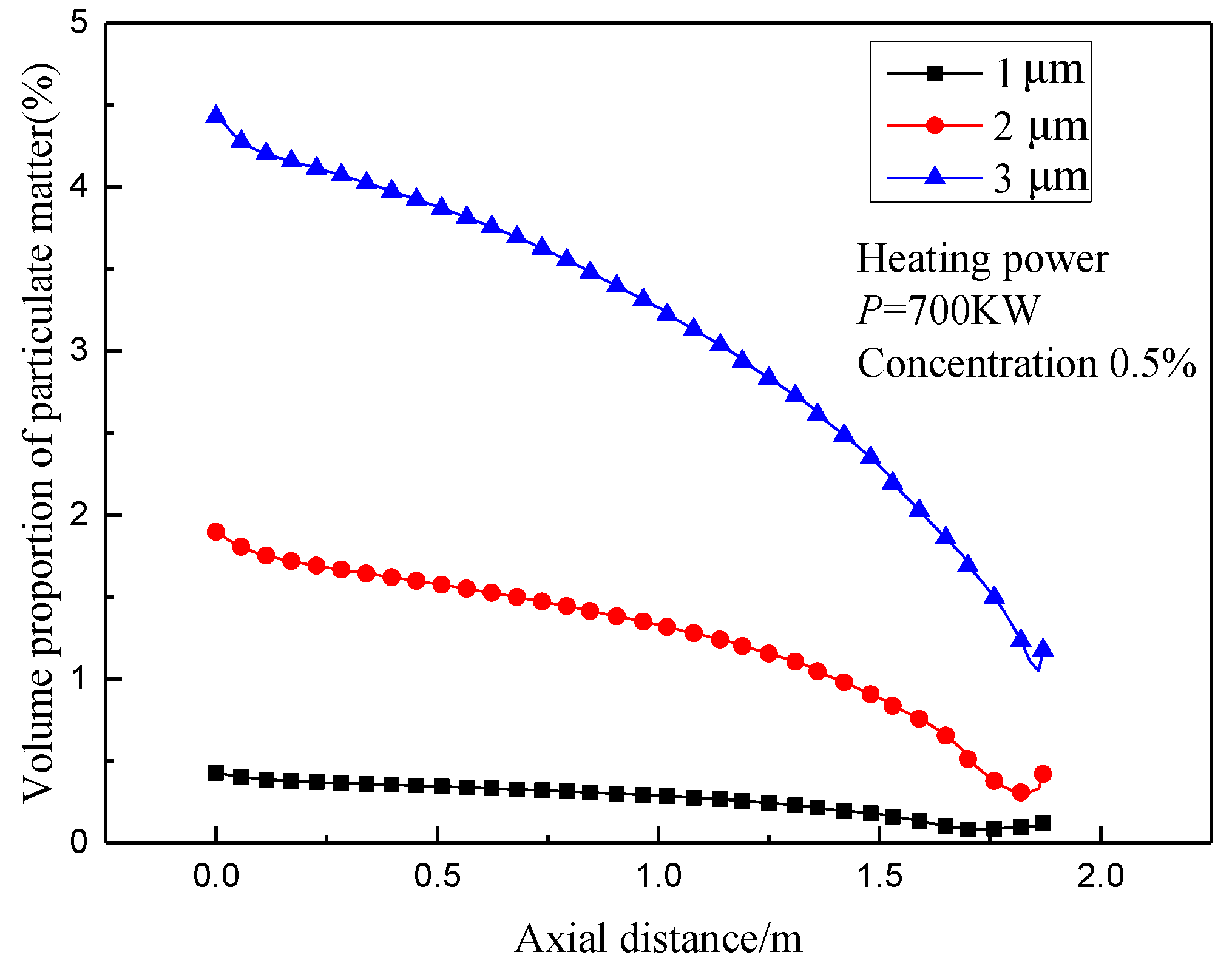
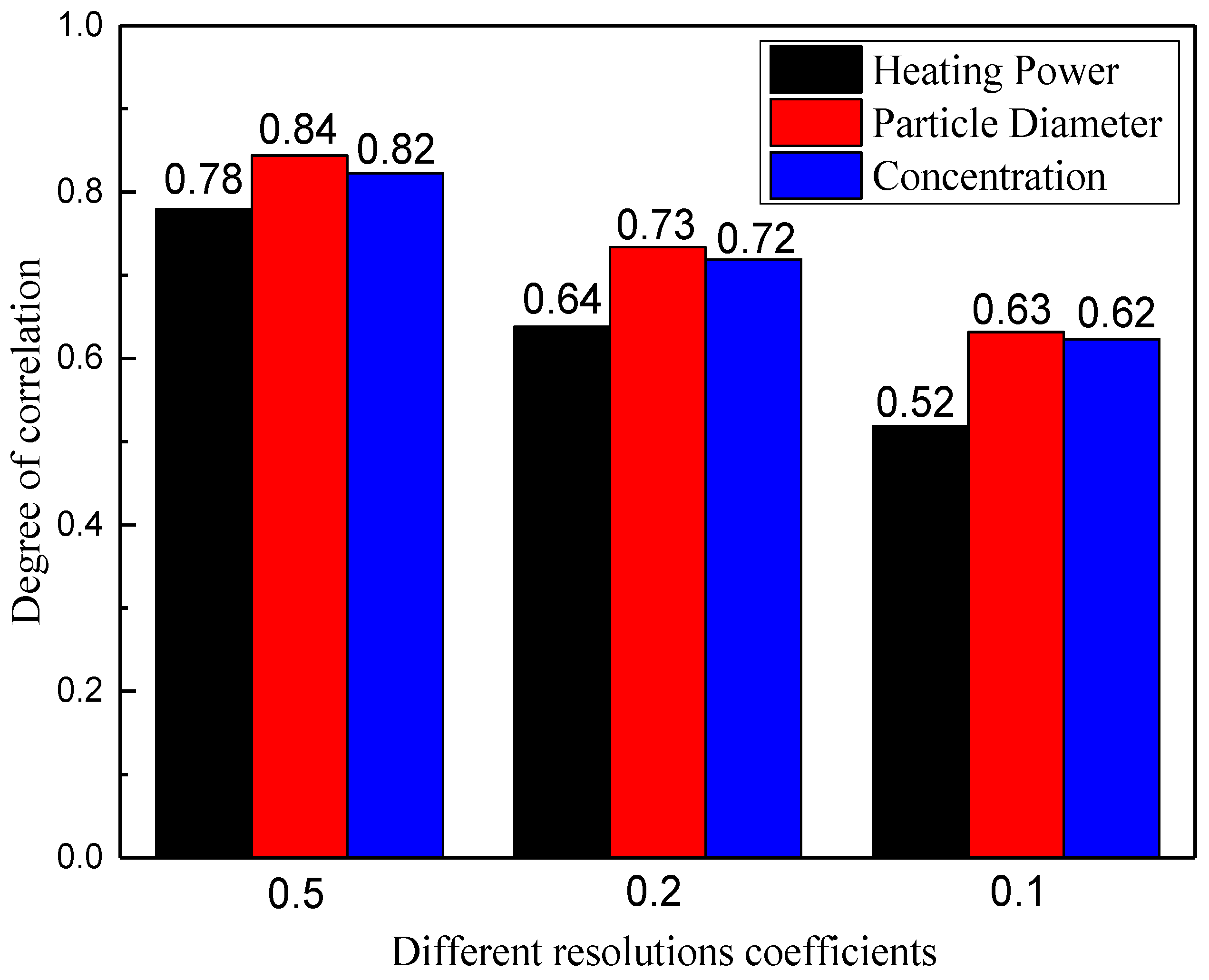

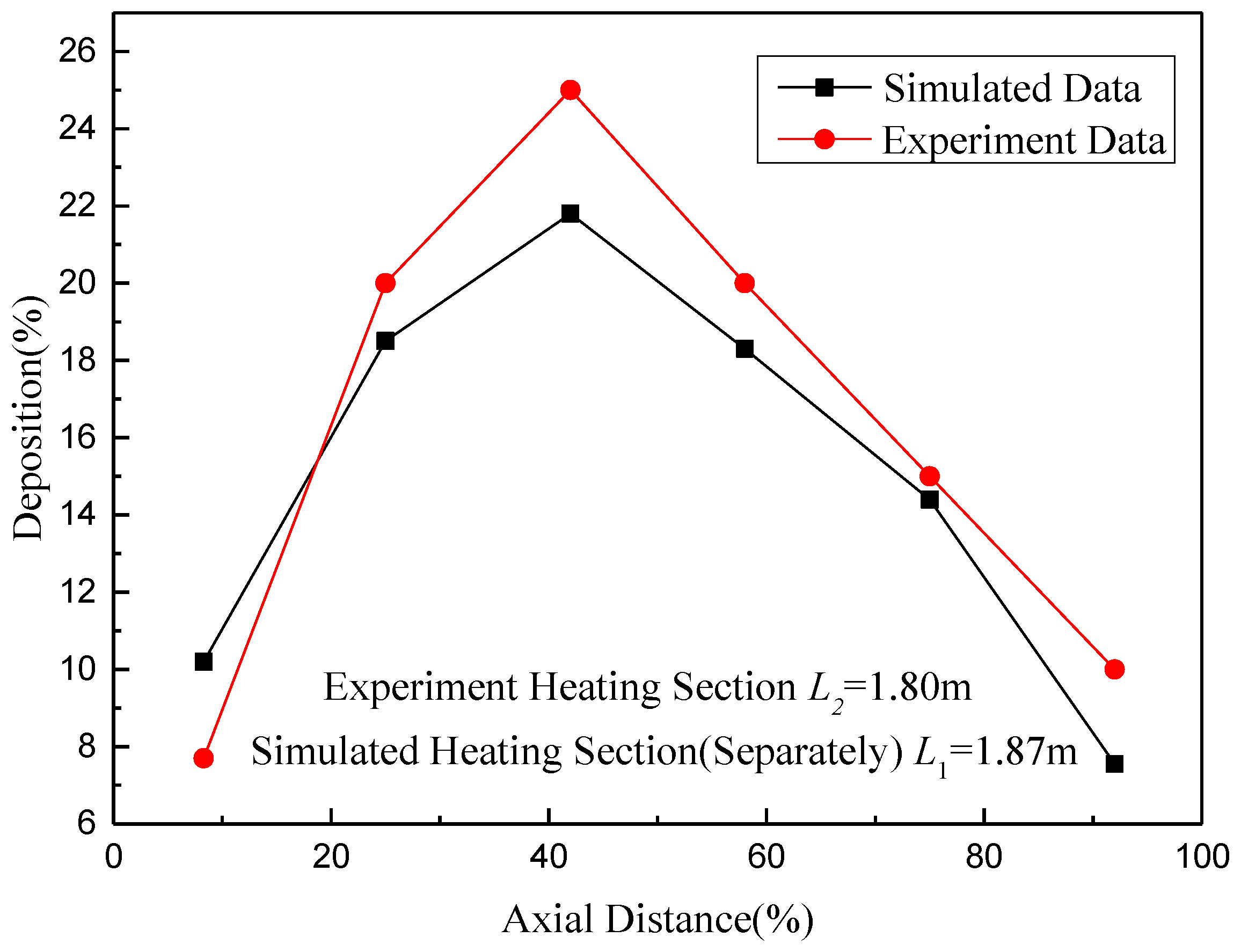
| Serial Number | Name | Unit | Value |
|---|---|---|---|
| 1 | Static system pressure | Mpa | 25 |
| 2 | Wall temperature of preheating section | K | 500 |
| 3 | Heat flux density of heating section | kW/m2 | 400–700 |
| 4 | Wall temperature of cooling section | K | 300 |
| 5 | Roughness of pipe wall | m | 1.0 × 10−5 |
| 6 | Turbulent Prandtl number | — | 0.9 |
| 7 | Initial temperature of fluid | K | 300 |
| 8 | Particle concentration (volume proportion) | % | 0.5–2 |
| 9 | Particle diameter | μm | 1–3 |
© 2019 by the authors. Licensee MDPI, Basel, Switzerland. This article is an open access article distributed under the terms and conditions of the Creative Commons Attribution (CC BY) license (http://creativecommons.org/licenses/by/4.0/).
Share and Cite
Zhu, L.; Zhou, T.; Ding, X.; Qin, X.; Zhang, J. Study on the Movement and Deposition of Particles in Supercritical Water Natural Circulation Based on Grey Correlation Theory. Energies 2019, 12, 2315. https://doi.org/10.3390/en12122315
Zhu L, Zhou T, Ding X, Qin X, Zhang J. Study on the Movement and Deposition of Particles in Supercritical Water Natural Circulation Based on Grey Correlation Theory. Energies. 2019; 12(12):2315. https://doi.org/10.3390/en12122315
Chicago/Turabian StyleZhu, Liangyu, Tao Zhou, Xijia Ding, Xuemeng Qin, and Jialei Zhang. 2019. "Study on the Movement and Deposition of Particles in Supercritical Water Natural Circulation Based on Grey Correlation Theory" Energies 12, no. 12: 2315. https://doi.org/10.3390/en12122315
APA StyleZhu, L., Zhou, T., Ding, X., Qin, X., & Zhang, J. (2019). Study on the Movement and Deposition of Particles in Supercritical Water Natural Circulation Based on Grey Correlation Theory. Energies, 12(12), 2315. https://doi.org/10.3390/en12122315




